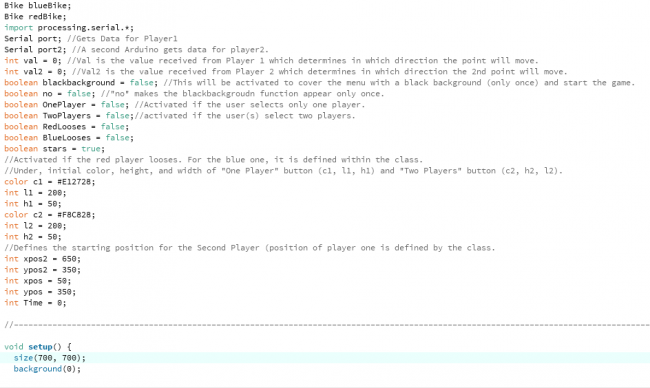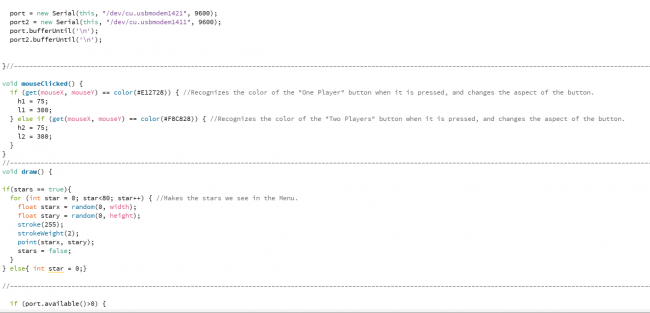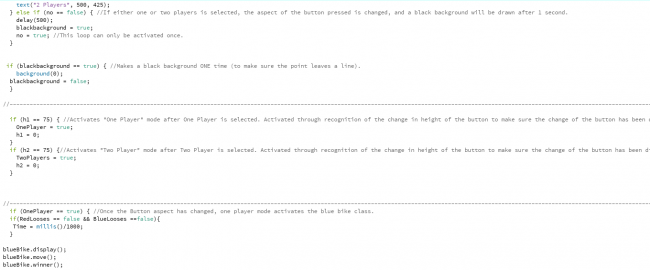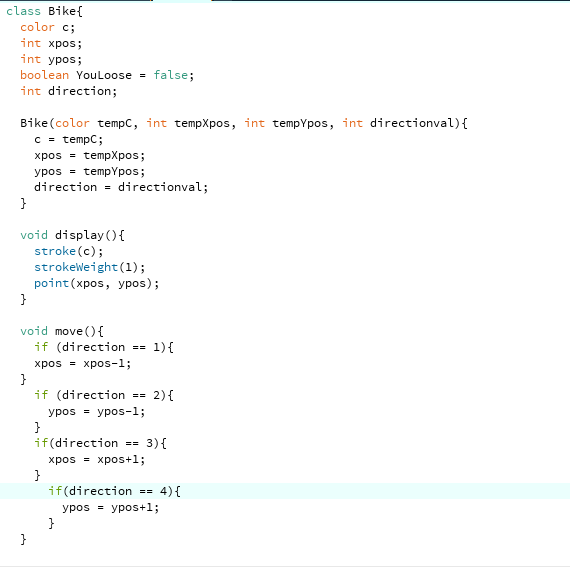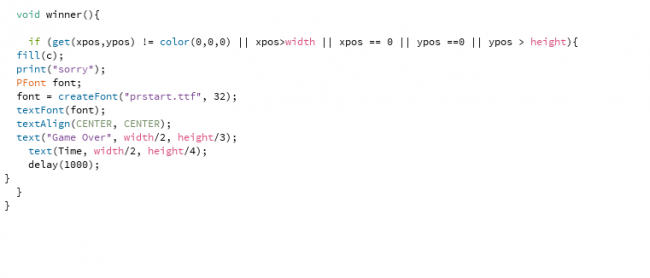Hello everybody,
any suggestions how I could merge my code below (movement tracing through for now a simple box) with e.g. this (http://studio.processingtogether.com/sp/pad/export/ro.9ldYvJUyiXGzi/latest) sketchpad code in which the trace fades slowly. I getting actual sensor data and am not using the mouse. I am trying to make the movement interpretation 'feel' more natural.
All suggestions or hints are super welcome Thank you already!!
import processing.serial.*;
Serial myPort;
int linefeed = 10; // Linefeed in ASCII
int numSensors = 3; // we will be expecting for reading data from 3 sensors
float sensors[]; // array to read the 3 values
float pSensors[];
void setup() {
size(1350, 800, P3D);
// List all the available serial ports in the output pane.
// You will need to choose the port that the Wiring board is
// connected to from this list. The first port in the list is
// port #0 and the third port in the list is port #2.
println(Serial.list());
myPort = new Serial(this, Serial.list()[2], 115200); // read bytes into a buffer until you get a linefeed (ASCII 10): myPort.bufferUntil(linefeed);
}
void draw() { if((pSensors != null)&&(sensors != null)) {
// now do something with the values read sensors[0] .. sensors[2]
//First I find all my rotation angles in radians so that center screen is (0,0)
float rotx = (sensors[0]*PI)/180;
float roty = (sensors[1]*PI)/180;
float rotz = (sensors[2]*PI)/180;
//float roty = 0;
background(0);
stroke(0, 0, 200);
//line (0,20,420,20); // monitor bar
fill(255);
textSize(1);
text (" rotateX(" + rotx +" pi)"+" , rotateY("+roty+" pi)"+" , rotateZ("+rotz+" pi)", 0,10);
fill(0, 0, 200);
translate(610, 380, 0); // center drawing start point in screen 180 TO 380
strokeWeight(1);
stroke(50);
line(-60, 0, 60, 0); //
line(0, 60, 0, -60); // draw stationary axis lines
line(0, 0, -60, 0, 0, 60); //
strokeWeight(0); // PPP: STROKEWEIGHT VON 1 NACH 0
stroke(0, 150, 0);
noFill();
box(40); // draw stationary box
rotateX(rotx); //
rotateY(roty); // rotate drawing coordinates according to user input variables
rotateZ(rotz); //
strokeWeight(0);
stroke(255);
line(10, 0, 10, 0); //PPPP ALL PLACES WITH 50 USED TO BE 150
line(0, 10, 0, -10); // draw the rotating axis lines
line(0, 0, -10, 0, 0, 10); //
strokeWeight(4);
stroke(57, 255, 20);
noFill();
box(100,60,350); // draw rotating red box PPPPP: CHANGED FROM 140!!!
} }
void serialEvent(Serial myPort) {
// read the serial buffer:2 String myString = myPort.readStringUntil(linefeed);
// if you got any bytes other than the linefeed: if (myString != null) {
myString = trim(myString);
// split the string at the commas
// and convert the sections into integers:
pSensors = sensors;
sensors = float(split(myString, ','));
// print out the values you got:
for (int sensorNum = 0; sensorNum < sensors.length; sensorNum++) {
print("Sensor " + sensorNum + ": " + sensors[sensorNum] + "\t");
}
// add a linefeed after all the sensor values are printed:
println();
} }






